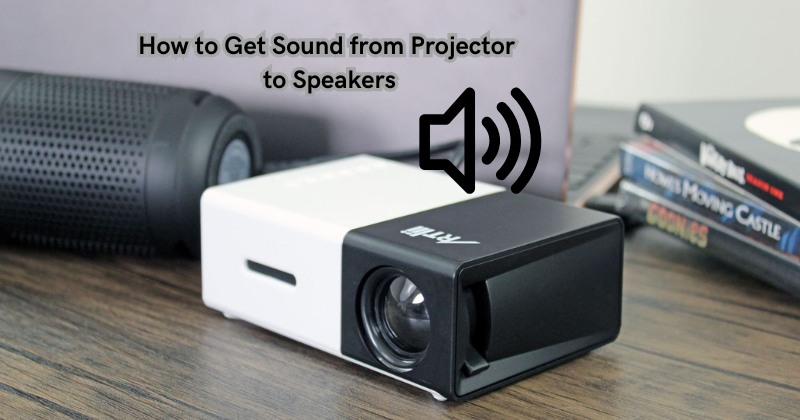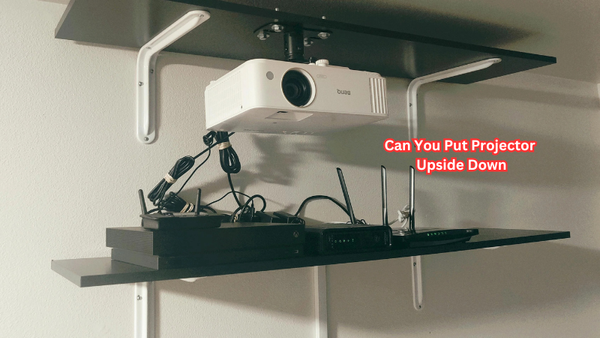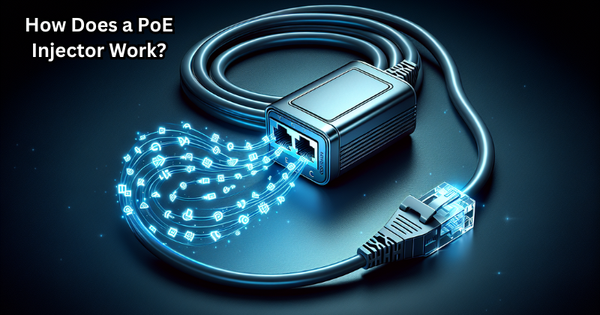Getting sound from a projector to speakers may seem daunting, but it's a straightforward process that can significantly enhance your audio-visual experience. Whether you're setting up for a home cinema night, a professional presentation, or an outdoor movie screening, ensuring crisp and clear sound quality is crucial.
The key lies in understanding the connectivity options available on your devices and selecting the right cables or wireless technology to bridge them.
This guide will walk you through the various methods to connect your projector to external speakers, from traditional wired connections to modern wireless solutions, ensuring your next viewing experience comes with sound as impactful as the visuals.
Understanding Your Equipment
Before diving into the different ways to connect your projector and speakers, it's essential to understand the ports and features available on each device. This will help you determine which connection method is best suited for your setup.
Projector
Most modern projectors have built-in speakers, but their sound quality may not be enough for a truly immersive experience. However, if your projector has an audio output port, you can easily connect it to external speakers using the appropriate cables. Audio cable options include:
- 3.5mm audio jack: This is the most common port on projectors and can be connected to external speakers using a 3.5mm audio cable.
- RCA (red and white) jacks: Some projectors may have RCA ports, which can connect speakers using an RCA cable.
- HDMI port: Newer projectors may have an HDMI port supporting video and audio output. You can connect this to your speakers using an HDMI converter or splitter.
Some projectors may also have Bluetooth or Wi-Fi capabilities, allowing for wireless audio streaming from your smartphone or laptop. If this is the case, you can skip the wired connection process altogether and opt for a more convenient wireless setup.
Speakers
There are various types of speakers available, including traditional wired speakers and wireless options such as Bluetooth or Wi-Fi speakers. It's important to note that not all projectors support wireless connections, so make sure to check the specifications of both your projector and speakers before attempting a wireless setup.
Bluetooth speakers are a popular choice for their portability and ease of use, while Wi-Fi speakers offer better sound quality and range. The external audio system should have either a 3.5mm audio jack, RCA ports, or HDMI ports to connect to your projector.
How to Get Sound from Projector to Speakers
Once you have familiarized yourself with the ports and features of your projector and speakers, it's time to connect them. We will discuss wired and wireless connection methods in detail below.
Wired Connections:
The most reliable option for connecting your projector to speakers is through a wired connection. This method uses cables and connectors to transmit audio signals from the projector's audio output to the speakers' input.
HDMI Cable
HDMI, or High Definition Multimedia Interface, is the standard cable used for transmitting both high-quality video and audio signals between devices. Most modern projectors and speakers come with HDMI ports, making it a convenient option to connect the two.
To connect your projector to external speakers using an HDMI cable, follow these steps:
- Start by turning off both the projector and speakers.
- Locate the HDMI port on your projector and connect one end of the HDMI cable to it.
- Connect the other end of the HDMI cable to an available HDMI input port on your speakers.
- Turn on both devices and switch your speakers to the correct input source for sound output from the projector.
HDMI output from your projector may vary depending on the audio settings. You may need to adjust the audio output in the projector's menu or through your device's sound settings for optimal sound quality.
Audio Cable
If your projector or speakers do not have HDMI ports, you can use an audio cable, also known as a 3.5mm auxiliary or RCA cable. This method involves connecting the projector's audio output to the speakers' input using a single-ended or double-ended audio cable, respectively.
To connect your projector to external speakers using an audio cable, follow these steps:
- Turn off both devices before starting the connection process.
- Locate the audio output port on your projector and connect one end of the audio cable to it.
- Connect the other end of the audio cable to either the single-ended or double-ended input port on your speakers.
- Turn on both devices and switch your speakers to the correct input source for sound output from the projector.
With care, connect speakers to the projector, and you should now be able to enjoy audio from your projector through your external speakers. Connecting external speakers to the projector is a simple process that can greatly enhance your viewing experience.
Wireless Connections:
While traditional wired connections provide reliable and stable sound transmission, they can be limited by distance and cable length.
Wireless connections, on the other hand, offer more flexibility and convenience in terms of placement and mobility. The projector supports Bluetooth or Wi-Fi capabilities, and your speakers have the same features; you can connect them wirelessly.
Bluetooth
If your projector and speakers support Bluetooth technology, this is one of the easiest methods for wireless sound transmission.
To enable Bluetooth on your projector, follow these steps:
- Turn on both devices and ensure that the Bluetooth function is enabled on both.
- On your projector, search for available Bluetooth devices and select your speakers from the list.
- Follow any additional pairing instructions that appear on the screen to complete the connection process.
- Once connected, switch your speakers to the correct input source for sound output from the projector. Bluetooth speaker connection may require reconnection each time you use them for your projector, so make sure to check the connection before every viewing.
To connect Bluetooth speaker to your projector, keep in mind that the quality of sound may not be as good as a wired connection, and there may be potential for audio delay or syncing issues.
Wi-Fi
Another wireless option for connecting your projector to speakers is through Wi-Fi. This method utilizes a home wireless network, allowing you to stream audio from the projector wirelessly to your speakers.
To connect your projector to external speakers using Wi-Fi, follow these steps:
- Make sure your projector and speakers are connected to the same Wi-Fi network.
- Install and open a compatible streaming app on your projector, such as Spotify or Apple Music.
- Select the song or audio you want to play and choose your speakers as the playback device.
- Adjust the volume and enjoy wireless sound from your projector to speakers.
Now position your speakers from the projector screen to optimize sound quality and volume. Depending on your network's strength and stability, Wi-Fi streaming may also experience potential delays or disruptions.
What causes sound not to get from a projector to speakers?
There are several possible reasons why you may be experiencing issues with getting sound from your projector to external speakers. Here are some common causes and troubleshooting tips:
- Incorrect settings: Make sure your projector's audio output is selected as the default or active output source. Also, ensure that the volume is not muted or turned down.
- Faulty cables or ports: Check that all cables and ports are undamaged and securely connected. Sometimes, a loose or damaged cable can cause sound transmission issues.
- Compatibility issues: Ensure that your projector and speakers are compatible with each other for audio output.
- Interference: In the case of wireless connections, obstacles, distance, or competing signals may cause interference and affect sound quality.
- Device malfunction: If all else fails, there may be an issue with either your projector or speakers that require professional assistance.
Suppose you are still unable to get sound from your projector to external speakers after troubleshooting. In that case, it is recommended to consult the user manual or contact the manufacturer for further support.
FAQs
Where does the sound come from on a projector?
The sound on a projector comes from either the built-in speakers or an external audio output source. Plus, the audio can also be accessed from other connected devices, such as a laptop or DVD player.
Why can't I hear sound from my projector?
If you are unable to hear sound from your projector, it could be due to incorrect audio settings, faulty cables or ports, compatibility issues, interference, or a device malfunction. Try troubleshooting these potential causes to resolve the issue.
Can I use any speakers with my projector?
Not all speakers are compatible with projectors. It is essential to check for compatibility and necessary input/output ports before connecting external speakers to your projector. Connect external speakers that best fit your projector's audio output capabilities for optimal sound quality.
Do projectors have volume?
Yes, most projectors have volume control options that allow you to adjust the sound from the built-in speakers or external audio output sources. However, some budget or smaller projectors may not have this feature. So, it is essential to check for this when purchasing a projector if sound capability is important to you.
Conclusion
To ensure seamless sound transmission from a projector to speakers, it's crucial to utilize the right connections and settings. Begin by confirming that both the projector and speakers have compatible input and output ports.
Opt for HDMI, optical, or audio cable connections for high-quality audio transfer. Then, navigate to the projector's settings to select the appropriate audio output source, ensuring it's routed to the connected speakers.
Adjust the speaker settings to receive input from the designated source, guaranteeing clear and synchronized sound delivery. Finally, a test run will be conducted to confirm the successful transmission of audio from the projector to the speakers. By following these steps, you can achieve optimal sound quality and enhance the overall viewing experience.





